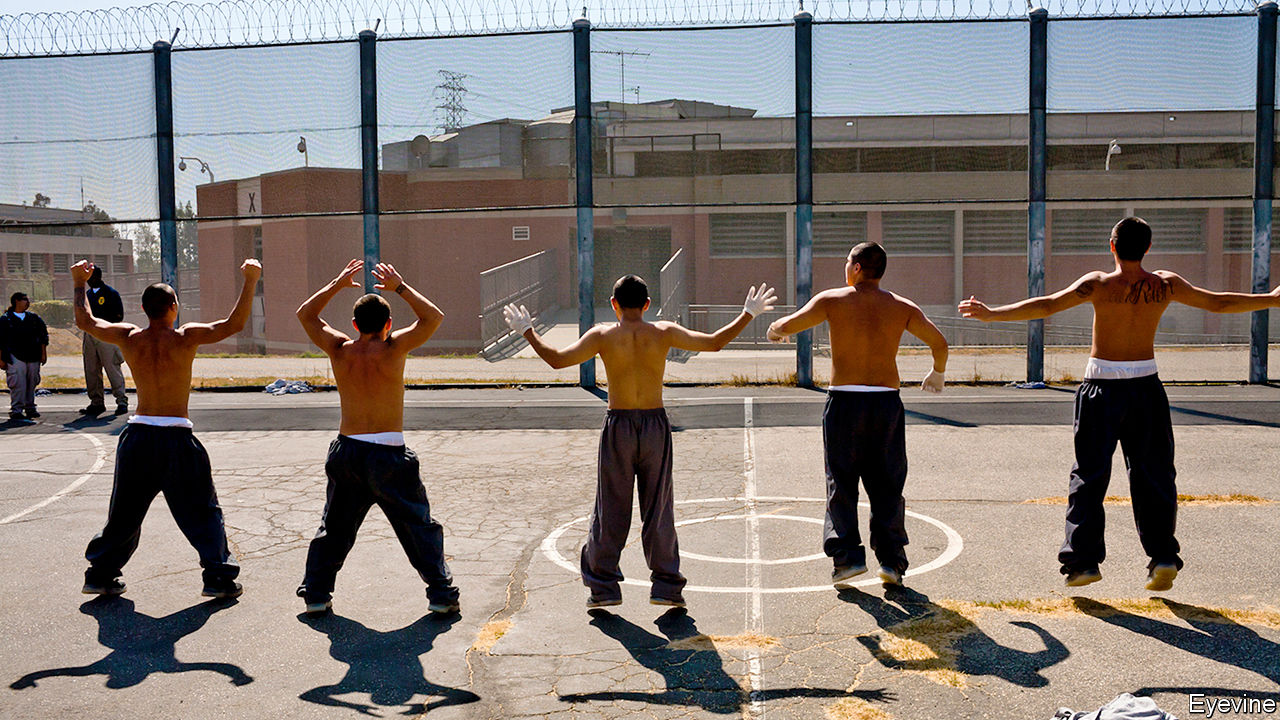
SO MANY OF America’s troubles are intractable. Hyper-partisanship and the culture wars can make reducing gun violence or obesity seem hopeless. But mass incarceration is different. There is ample evidence that America’s states can lock fewer people up and still preserve public safety. Just look at Minnesota, which bangs up people at half the rate of neighbouring Wisconsin, though the crime rate in both places is about the same (see article). In a few weeks’ time voters in Wisconsin and in other states will be asked to choose whether they wish to keep putting so many people inside or try something else. They should vote for change.
America is violent, so it naturally makes more use of prison than many other countries do. But that cannot explain how it manages to be the world leader in locking up its own citizens, both in absolute terms and as a share of the population. China is a one-party state with a billion more citizens than America, yet it incarcerates half a million fewer people (though this does not include perhaps 1m Uighurs interned in camps in Xinjiang). You might think America’s legal system and culture are to blame. But the incarceration rate—defined as the number of prisoners divided by the total population—is four-and-a-half times greater than in Britain, which has a similar system and culture.
The best explanation for most of this prison binge is four decades of panic, starting with the declaration of a war on drugs in the 1970s. Voters elected prosecutors who promised to lock more people up than their rivals. They chose legislators who promised the harshest possible mandatory-sentencing laws, which took discretion away from judges. In some states prison-officers’ unions lobbied for new, bigger jails to be built, so as to provide their members with jobs. The use of pre-trial detention shot up. In places where public defenders are scarce, that resulted in long waits behind bars before a case was even heard.
This is unworthy of the land of the free. It is also a waste of public money. Depending on what is included, estimates of American spending on imprisonment range from $80bn a year up to $180bn. There is abundant evidence that you can cut prison numbers and crime rates at the same time. Since the mid-1990s, New York City has seen its prison population fall by almost two-thirds even as violent crime has more than halved.
The states have the power to do something about this, because they do most of the locking up. The federal government imprisons people at a lower rate than the governments of France and Italy. It is the state and local authorities that lift America above El Salvador, a fragile state beset by drug wars, which takes second place in the incarceration league table, and above Turkmenistan, one of the world’s most repressive countries, in third. In fact, if American states were countries they would take up every single place in the table’s top 20.
Some states are grappling with their part in this. Reducing prison populations is not just a matter of passing a decree, then sitting back and waiting. States need to make a lot of small changes that, compounded over a decade or more, will eventually amount to something bigger. A list would include alternatives to prison for non-violent offenders, problem-solving courts that use incarceration as a last resort, reserving the longest sentences for those who pose a danger to the public, bail reform and treatment programmes for mentally ill defendants.
Thanks to such measures, America’s incarceration rate has fallen a little since 2010, after 40 years of increases. Crucially, the states responsible for this improvement do not fall predictably on either side of the usual Republican or Democratic division. Deeply Republican Texas has long been a pioneer in criminal-justice reform. Deeply Democratic California has reduced its incarceration rate by more than most other states. South Carolina, no American liberal’s idea of a model, has pursued a notably enlightened reform to the sentencing of non-violent offenders.
Saving money by saving time
That is not to say reform is always easy. It takes courage and skill to explain to voters that sending more people to prison is not always a sensible way to punish criminals and reduce crime. Even well-designed improvements can fail when they are implemented poorly. Louisiana, which has taken steps to reduce its prison population, is already seeing signs of a backlash.
Yet despite the difficulties, plenty of states have made a start. Mass imprisonment is a bad choice touted by politicians looking for easy votes. Their constituents assumed this would keep them safer. In fact, it only makes them poorer.








